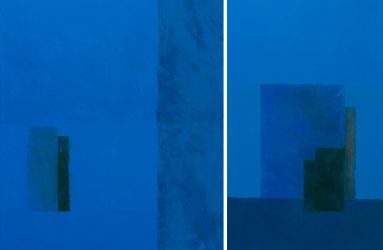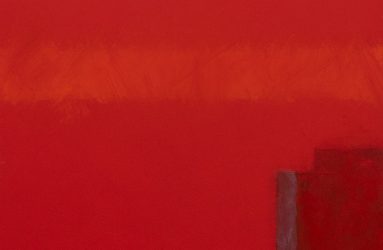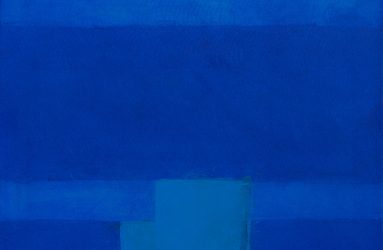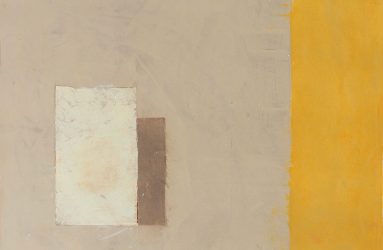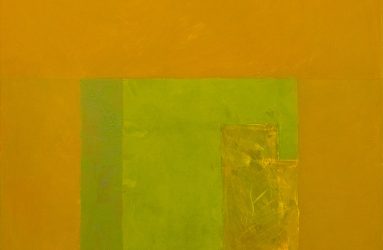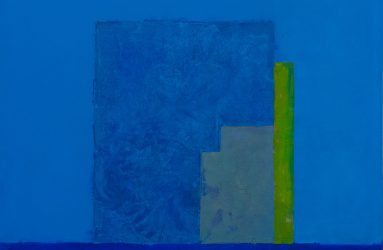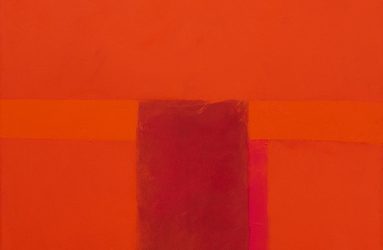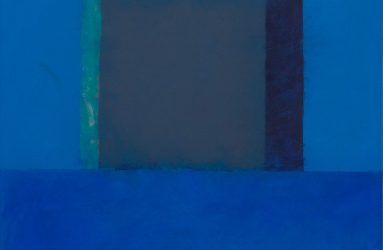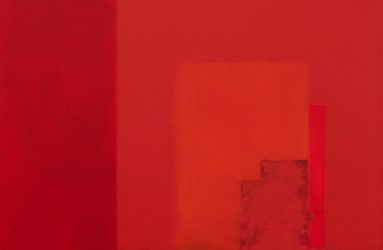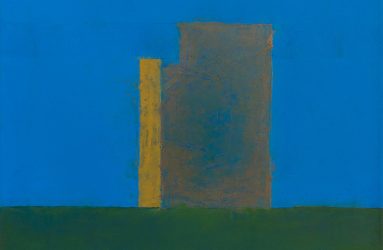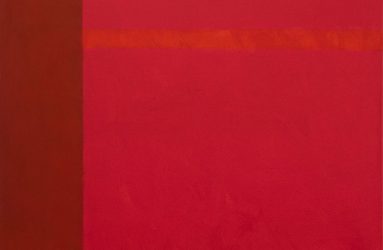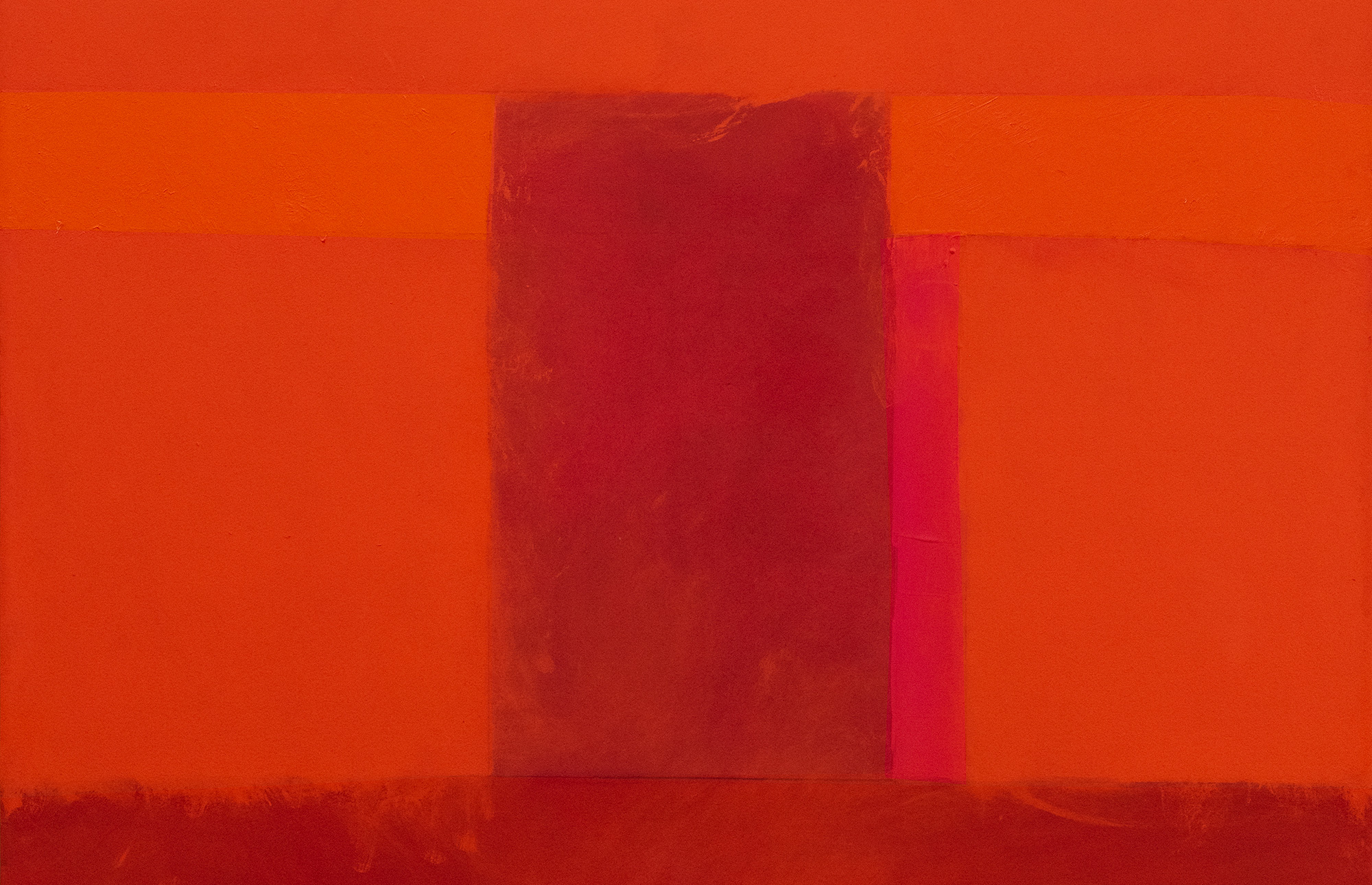
–
From October 23 to November 29, 2024
The geometric rigor of Juan Lecuona’s paintings suggests an apparent firmness: these shapes—blocks of presumed urban constructions—are like the forms of a dream upon waking: one is sure of their outlines, but the very intensity of the dream makes the sharp contours of the figure hazy. The artist achieves this morphological dream-like quality in two ways, which we had already seen in previous works, but which now reaches an impossible balance between matter and weightlessness.
On the one hand, Lecuona can repeat the color and attempt minimal variations in scale: that alone is enough to change and make each painting feel distinct. These repetitions—which in reality repeat nothing except the constructive principle—are the cause of alteration, of the disruption of the composition. The sequenced contemplation of a series (such as the blues, for example) organizes a different dramatic action, but this action does not negate the inherent action of each painting, which is a closed drama, like a monad. Here, the second of his methods emerges. According to Leibniz, monads have no windows; Lecuona’s paintings—each one a monad—don’t have them either: nothing from the outside reaches them. Lecuona once spoke of the “peculiar light” that seems to come from within his paintings. Lecuona’s landscapes—uncertain as I sense them, obsessive like something elusive to the one who seeks to see them—possess a light entirely their own, an emanation that the artist seems to organize, concealing that he himself is the source of the radiated light.
Lecuona enjoys what Ricardo Piglia said in the preliminary note to the short stories collected in Nombre falso: “When I think of these stories, I remember a window that looked out onto a courtyard. I suppose that having written them while occasionally looking at the light from that window gives them, for me, a certain unity: as if the stories were there, on the other side of the glass.” Lecuona too has his windows, in São Paulo, in Buenos Aires. The artist doesn’t paint windows, nor does he paint what is seen through a window: he turns the painting itself into a window through which we see, and through which perhaps we are seen. Hence, the constant veil of his paintings, the veil of light.
Pablo Gianera
–

